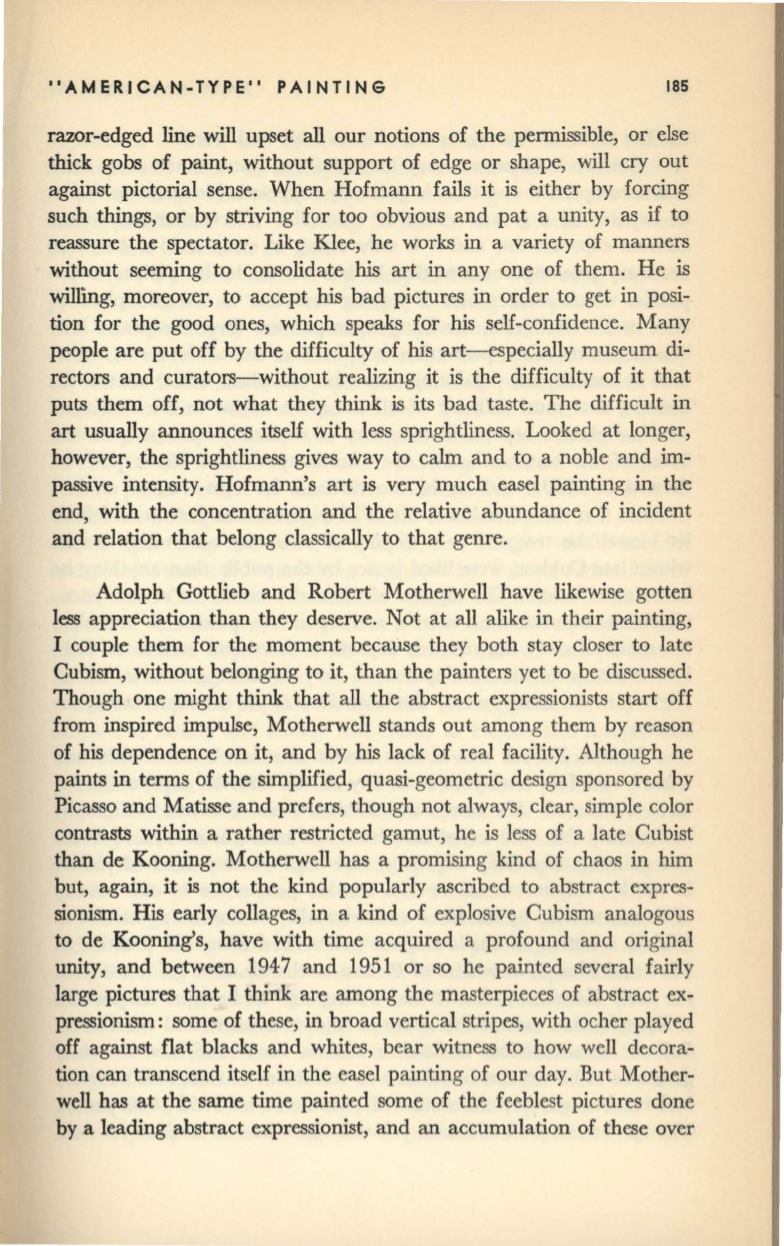
"AMERICAN-TYPE" PAINTING
185
razor-edged line will upset
all
our notions of the pennissible, or else
thick gobs of paint, without support of edge or shape, will cry out
against pictorial sense. When Hofmann fails it is either by forcing
such things, or by striving for too obvious and pat a unity, as if to
reassure the spectator. Like Klee, he works in a variety of manners
without seeming to consolidate
his
art
in
anyone of them. He is
willing, moreover, to accept his bad pictures in order to get in posi–
tion for the good ones, which speaks for his self-confidence. Many
people are put off by the difficulty of his art-especially museum di–
rectors and curators-without realizing it is the difficulty of it that
puts them off, not what they think is its bad taste. The difficult in
art usually announces itself with less sprightliness. Looked at longer,
however, the sprightliness gives way to calm and to a noble and im–
passive intensity. Hofmann's art is very much easel painting in the
end, with the concentration and the relative abundance of incident
and relation that belong classically to that genre.
Adolph Gottlieb and Robert Motherwell have likewise gotten
less appreciation than they deserve. Not at all alike in their painting,
I couple them for the moment because they both stay closer to late
Cubism, without belonging to it, than the painters yet to be discussed.
Though one might think that all the abstract expressionists start off
from inspired impulse, Motherwell stands out among them by reason
of his dependence on it, and by
his
lack of real facility. Although he
paints
in
terms of the simplified, quasi-geometric design sponsored by
Picasso and Matisse and prefers, though not always, clear, simple color
contrasts within a rather restricted gamut, he is less of a late Cubist
than de Kooning. Motherwell has a promising kind of chaos in
him
but, again, it is not the kind popularly ascribed to abstract expres–
sionism. His early collages, in a kind of explosive Cubism analogous
to de Kooning's, have with time acquired a profound and original
unity, and between 1947 and 1951 or so he painted several fairly
large pictures that I think are among the masterpieces of abstract ex–
pressionism: some of these, in broad vertical stripes, with ocher played
off against flat blacks and whites, bear witness to how well decora–
tion can transcend itself in the easel painting of our day. But Mother–
well has at the same time painted some of the feeblest pictures done
by .a leading abstract expressionist, and an accumulation of these over


